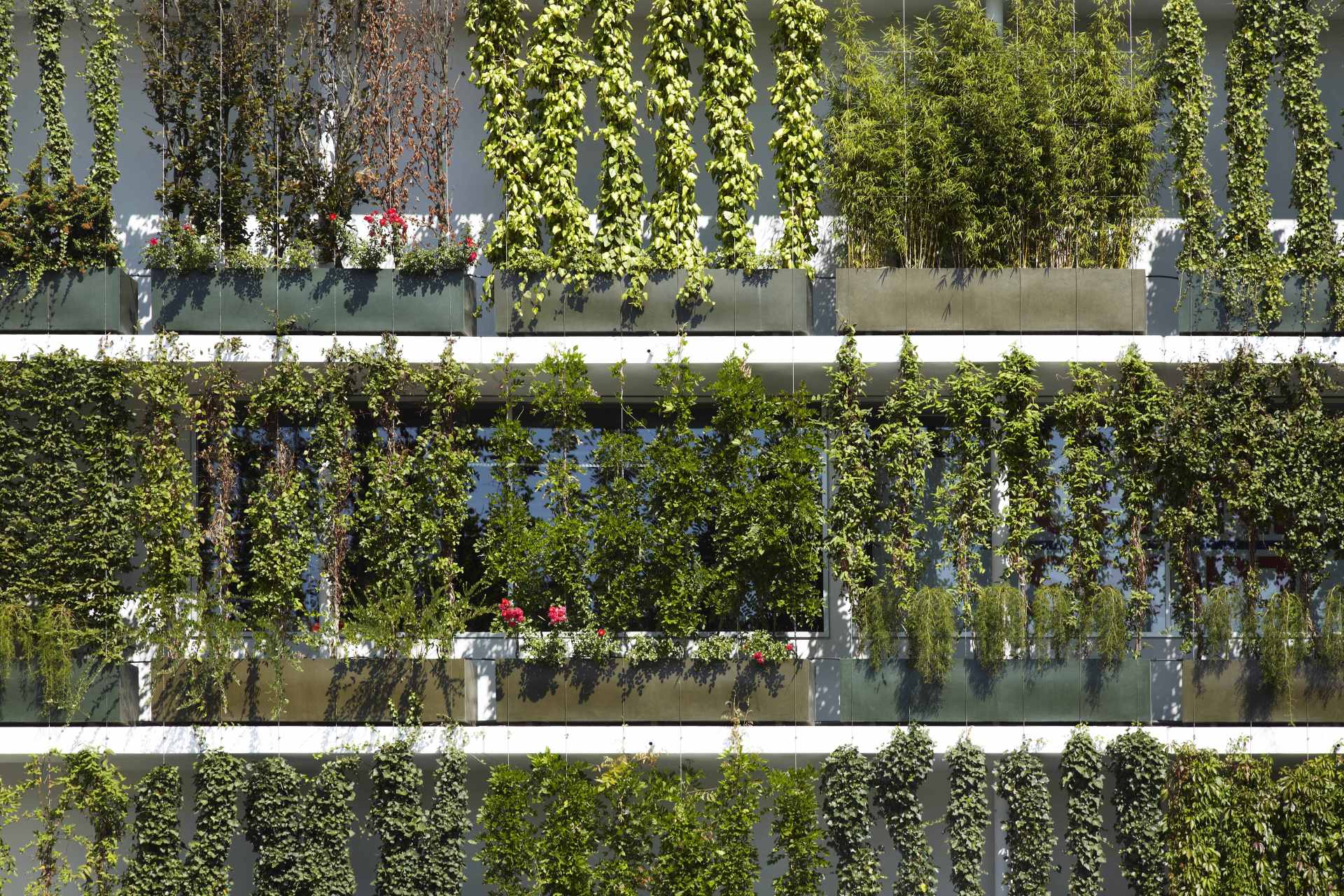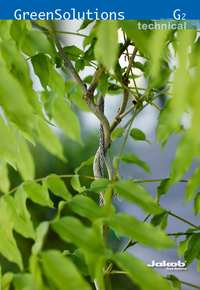
Green walls, vertical gardens… what’s the difference?
Greening types
There are many different systems for greening - with their own advantages and disadvantages
Over the last twenty years, greening of facades and buildings has become one of the most innovative fields of modern architecture. This niche has developed into a trend that is likely to continue in the future. This has also been accompanied by a technical evolution. Today, architects and planners have a vast choice of different systems for greening, each with its own advantages and disadvantages.
Traditional facade greening

The simplest and oldest form of façade greening is still widespread and common: the growth of wild vine, ivy or other self-climbing plants that cling to the masonry and grow upwards. However, this simple and inexpensive option is not practical for many façades: only smooth, undamaged masonry or plaster is suitable. Maintenance and design of greenery is also difficult. The plants often grow in every direction until they can no longer bear their own weight. The result: the greening collapses and fall off the wall. Damage to the masonry is the result.
Green Walls, living walls etc.

For a long time, the feared damage to the façade has caused building owners to shy away from greenery. A modern answer to this are green walls, such as those developed by the French botanist Patric Blanc and available under names such as "living wall", hydroponic greening, or vertical gardens. Pre-grown panels with surfaces of mosses and grasses are attached to the walls for a striking effect. The panels offer almost unlimited design options, even pictures are possible. A big challenge for many home owners, however, are the high costs: the complex installations consist of fleeces and substrates and need an automatic irrigation and nutrient supply, quickly adding up to five-figure amounts for a few square metres of greenery. Usually the systems are only short-lived and optimized for the unique effect, as the death of the first installation of this type in London 10 years ago shows.
Modern ground-based greening

This is where modern ground-based greenery can show off its strengths. Steel ropes are used for a supporting framework for various types of climbing plants. In contrast to wall-bound systems, stainless steel cables are inexpensive to purchase and maintain. The plants are rooted in the soil and hence do not require a costly water and nutrient supply. A minimal use of material provides high energetic benefits with a long service life and little maintenance. In contrast to wooden scaffolding, structures made of stainless steel do not rot, are wind and weather resistant and can easily support the loads of the plant. The prerequisite for successful plant growth is a suitable soil with a groundwater supply. It can take one to three years until complete growth is achieved. Here too, regular care and cooperation with experts is the surest way to success.
Downloads

The program is presented in two parts. The catalog GreenSolutions Technical contains all wire rope products with their technical information for your greening project.
Download
The program is presented in two parts. In the GreenSolutions reference brochure, you will find many real-world applications that show you the potential of greening.
Download